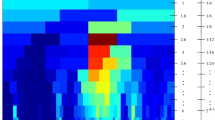Abstract
With the increasing installed power of the wind turbines, the necessity of condition monitoring for wind turbine drivetrain cannot be neglected any longer. A reliable and rapid response fault diagnosis is vital for the wind turbine drivetrain system. The existing manual inspection-based methods are difficult to accomplish the real-time compound-fault monitoring task. To solve this problem, this paper proposes a novel dual extreme learning machines (Dual-ELMs) based fault diagnostic framework for feature extraction and fault pattern recognition. At the stage of feature learning, this paper applies the local mean decomposition (LMD) method to extract the production functions from the raw vibration signals. Compared with the traditional empirical mode decomposition method, the LMD method has a stronger ability to restrain the mode mixing and endpoints effect. At the stage of compound-fault classification, unlike the other widely-used classifiers, the proposed Dual-ELM networks inherit the advantages of the original extreme learning machines (ELMs), that employs two basic ELM networks for the compound-fault classification, and it does not need iterative fine-tuning of parameters. Thus the learning speed is faster than the other combinations of classifiers. The experimental validity of the proposed algorithm was conducted on a test rig for vibration analysis, which demonstrated that the proposed Dual-ELMs based fault diagnostic method provides an effective measure for the observed machinery than the other available fault diagnostic methods in aspects of feature extraction and compound-fault recognition.









Similar content being viewed by others
References
Wang X-B, Yang Z-X, Yan X-A (2018) Novel particle swarm optimization-based variational mode decomposition method for the fault diagnosis of complex rotating machinery. IEEE ASME Trans Mechatron 23:68–79
Yang Y, Dong X, Peng Z, Zhang W, Meng G (2015) Vibration signal analysis using parameterized timefrequency method for features extraction of varying-speed rotary machinery. J Sound Vib 335:350–366
Shao L, Liu L, Li X (2014) Feature learning for image classification via multiobjective genetic programming. IEEE Trans Neural Netw Learn Syst 25(7):1359–1371
Dai X, Gao Z (2013) From model, signal to knowledge: a data-driven perspective of fault detection and diagnosis. IEEE Trans Ind Inf 9(4):2226–2238
Yan Z, Miyamoto A, Jiang Z (2009) Frequency slice wavelet transform for transient vibration response analysis. Mech Syst Signal Process 23(5):1474–1489
Kia SH, Henao H, Capolino G-A (2009) Diagnosis of broken-bar fault in induction machines using discrete wavelet transform without slip estimation. IEEE Trans Ind Appl 45(4):1395–1404
Al-Badour F, Sunar M, Cheded L (2011) Vibration analysis of rotating machinery using time-frequency analysis and wavelet techniques. Mech Syst Signal Process 25(6):2083–2101
Jauregui-Correa JC (2013) The effect of nonlinear traveling waves on rotating machinery. Mech Syst Signal Process 39(1):129–142
Wang Z, Han Z, Gu F, Gu JX, Ning S (2015) A novel procedure for diagnosing multiple faults in rotating machinery. ISA Trans 55:208–218
Smith JS (2005) The local mean decomposition and its application to eeg perception data. J R Soc Interface 2(5):443–454
Cheng J, Yang Y, Yang Y (2012) A rotating machinery fault diagnosis method based on local mean decomposition. Digital Signal Process 22(2):356–366
Zheng Z, Jiang W, Wang Z, Zhu Y, Yang K (2015) Gear fault diagnosis method based on local mean decomposition and generalized morphological fractal dimensions. Mech Mach Theory 91:151–167
Li Y, Xu M, Haiyang Z, Wei Y, Huang W (2015) A new rotating machinery fault diagnosis method based on improved local mean decomposition. Digital Signal Process 46:201–214
Ziad S, Hojjat A (2011) Probabilistic neural networks for diagnosis of alzheimer’s disease using conventional and wavelet coherence. J Neurosci Methods 197(1):165–70
Tang J, Deng C, Huang G-B (2016) Extreme learning machine for multilayer perceptron. IEEE Trans Neural Netw Learn Syst 27(4):809–821
Cheng X, Liu H, Xu X, Sun F (2017) Denoising deep extreme learning machine for sparse representation. Memet Comput 9(3):199–212
Lu H, Du B, Liu J, Xia H, Yeap WK (2017) A kernel extreme learning machine algorithm based on improved particle swam optimization. Memet Comput 9(2):121–128
Das SP, Padhy S (2016) Unsupervised extreme learning machine and support vector regression hybrid model for predicting energy commodity futures index. Memet Comput 3:1–14
Huang GB, Zhou H, Ding X, Zhang R (2012) Extreme learning machine for regression and multiclass classification. IEEE Trans Syst Man Cybern Part B Cybern 42(42):513–29
Yang Z-X, Wang X-B, Zhong J-H (2016) Representational learning for fault diagnosis of wind turbine equipment: a multi-layered extreme learning machines approach. Energies 9(6):379
Yang Y, Wu QJ, Wang Y (2016) Autoencoder with invertible functions for dimension reduction and image reconstruction. IEEE Trans Syst Man Cybern Syst PP(99):1–15
Yang Y, Wu QJ (2016) Multilayer extreme learning machine with subnetwork nodes for representation learning. IEEE Trans Cybern 46(11):2570–2583
Huang G-B, Zhu Q-Y, Siew C-K (2006) Extreme learning machine: theory and applications. Neurocomputing 70(1):489–501
Yang Y, Wu QJ (2016) Extreme learning machine with subnetwork hidden nodes for regression and classification. IEEE Trans Cybern 46(12):2885–2898
Yang Y, Wu QJ, Wang Y, Zeeshan K, Lin X, Yuan X (2015) Data partition learning with multiple extreme learning machines. IEEE Trans Cybern 45(8):1463–1475
Gong X, Qiao W (2013) Bearing fault diagnosis for direct-drive wind turbines via current-demodulated signals. IEEE Trans Ind Electron 60(8):3419–3428
Huang NE (1998) Huang, n.e, et al.: The empirical mode decomposition and the hilbert spectrum for nonlinear and non-stationary time series analysis. proc. r. soc. lond. a 454, 903–995. Proc R Soc A Math Phys Eng Sci 454(1971):903–995
Acknowledgements
This work was supported in part by the Science and Technology Development Fund of Macao SAR (FDCT) under MoST-FDCT Joint Grant 015/2015/AMJ and Grant FDCT/121/2016/A3, FDCT/194/2017/A3 in part by University of Macau under Grant MYRG2016-00160-FST and MYRG2018-00248-FST, and in part by the Ministry of Science and Technology of China under Grant 2016YFE0121700.
Author information
Authors and Affiliations
Corresponding author
Additional information
Publisher's Note
Springer Nature remains neutral with regard to jurisdictional claims in published maps and institutional affiliations.
Rights and permissions
About this article
Cite this article
Wang, XB., Yang, ZX., Wong, P.K. et al. Novel paralleled extreme learning machine networks for fault diagnosis of wind turbine drivetrain. Memetic Comp. 11, 127–142 (2019). https://doi.org/10.1007/s12293-018-0277-2
Received:
Accepted:
Published:
Issue Date:
DOI: https://doi.org/10.1007/s12293-018-0277-2




